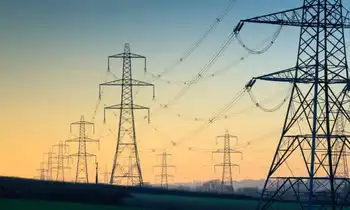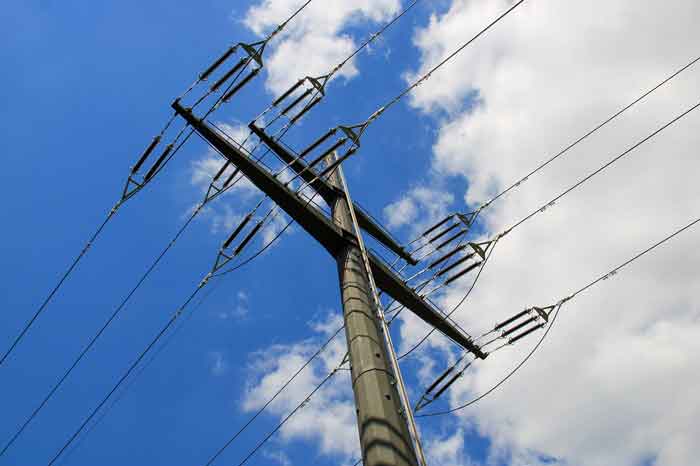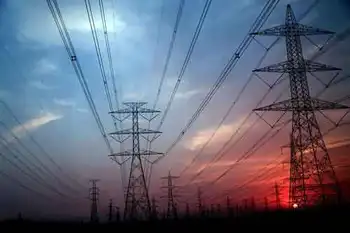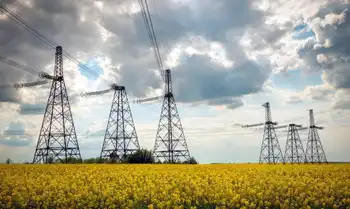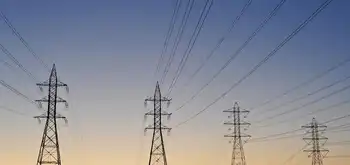SaddamÂ’s uranium arrives in Canada
By Toronto Star
Arc Flash Training CSA Z462 - Electrical Safety Essentials
Our customized live online or in‑person group training can be delivered to your staff at your location.

- Live Online
- 6 hours Instructor-led
- Group Training Available
The 550 tonnes of “yellowcake,” the seed material for higher-grade nuclear enrichment, was sold to Canadian uranium producer Cameco Corp. in a transaction the official described as worth “tens of millions of dollars.”
A ship carrying the cargo arrived July 5 in Montreal and Cameco spokesperson Lyle Krahn said the yellowcake will be processed at facilities in Ontario for use in energy-producing reactors.
“We are pleased... that we have taken (the yellowcake) from a volatile region into a stable area to produce clean electricity,” he said.
However, there was no confirmation from the Port of Montreal.
Robert Desjardins, co-ordinator of the port, said “we don’t have any information” on such a shipment arriving there.
He said no ships under American flags were listed as being in the port Saturday, or as being expected.
The deal culminated more than a year of intense diplomatic and military initiatives — kept hushed in fear of ambushes or attacks once the convoys were under way.
It was a significant step toward closing the books on SaddamÂ’s nuclear legacy.
But it also raises serious security concerns, an environmental activist said Saturday.
“Cameco has made it clear that this uranium will simply be integrated into their commercial processing stream at its refinery in Port Hope and I assume that this uranium still needs to be shipped from Montreal to Port Hope — if it hasn’t already been sent, not clear whether that’s going by land or by sea, could be either, or by air,” said Dave Martin, the energy co-ordinator for Greenpeace Canada.
“I think Cameco and the Canadian government owe the Canadian public some disclosure on that front.”
WhatÂ’s now left is the final and complicated push to clean up the remaining radioactive debris at the former Tuwaitha nuclear complex about 20 kilometres south of Baghdad.
While yellowcake alone is not considered potent enough for a so-called “dirty bomb” — a conventional explosive that disperses radioactive material — it could stir widespread panic if incorporated in a blast.
Moving the yellowcake faced numerous hurdles.
Diplomats and military leaders first weighed the idea of shipping the yellowcake overland to KuwaitÂ’s port on the Persian Gulf.
Such a route, however, would pass through IraqÂ’s Shiite heartland and be within easy range of extremists.
The ship also would need to clear the narrow Strait of Hormuz at the mouth of the Gulf, where U.S. and Iranian ships often come in close contact.
Kuwaiti authorities, too, were reluctant to open their borders to the shipment despite top-level lobbying from Washington.
The yellowcake still needed a final destination.
Iraqi government officials sought buyers on the commercial market, where uranium prices spiked at about $120 (US) per pound last year. ItÂ’s currently selling for about half that.
The Cameco deal was reached earlier this year, the official said.
At that point, U.S.-led crews began removing the yellowcake from the Saddam-era containers, some leaking or weakened by corrosion, and reloading the material into about 3,500 secure barrels.
In April, truck convoys started moving the yellowcake from Tuwaitha to BaghdadÂ’s international airport.
Then, for two weeks in May, it was ferried on 37 flights to Diego Garcia, a speck of British territory in the Indian Ocean where the U.S. military maintains a base. On June 3, an American ship left the island for Montreal.
Yellowcake can also be enriched for use in reactors and, at higher levels, nuclear weapons using sophisticated equipment.
Yellowcake is obtained by using various solutions to leach out uranium from raw ore and can have a corn meal-like colour and consistency.
It poses no severe risk if stored and sealed properly.
However, exposure can carry well-documented health concerns associated with heavy metals such as damage to internal organs, experts say.
“The big problem comes with any inhalation of any of the yellowcake dust,” said Doug Brugge, a professor of public health issues at the Tufts University School of Medicine.
The yellowcake wasnÂ’t the only dangerous item removed from Tuwaitha.
Earlier this year, the military withdrew four devices for controlled radiation exposure from the former nuclear complex.
The lead-enclosed irradiation units, used to decontaminate food and other items, contain elements of high radioactivity that could potentially be used in a weapon.
Their Ottawa-based manufacturer, MDS Nordion, took them back for free, an official said.
The yellowcake was the last major stockpile from SaddamÂ’s nuclear efforts, but years of final cleanup is ahead for Tuwaitha and other smaller sites.
The yellowcake issue is one of the many troubling footnotes of the war for Washington.
A CIA officer, Valerie Plame, claimed her identity was leaked to journalists to retaliate against her husband, former Ambassador Joe Wilson, who wrote that he had found no evidence to support assertions that Iraq tried to buy additional yellowcake from Niger.
A federal investigation led to the conviction of I. Lewis (Scooter) Libby, Vice President Dick CheneyÂ’s chief of staff, on charges of perjury and obstruction of justice.





